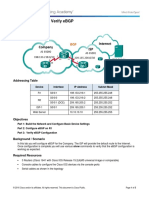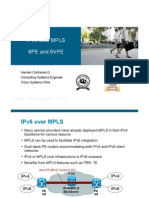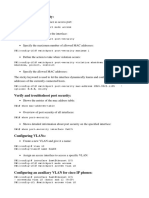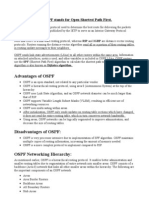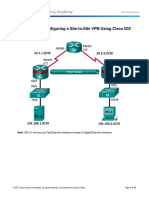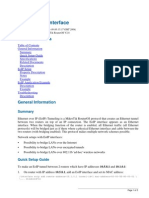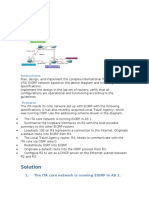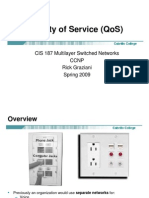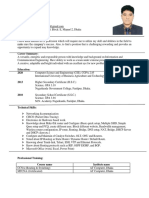0% found this document useful (0 votes)
312 views26 pages3 Tier Campus LAN Configuration
This document describes a 3-tier campus LAN topology with core, distribution, and access layers. It has 4 VLANs each with a /24 subnet. Layer 3 links connect the distribution and core layers running EIGRP or OSPF. The distribution layer provides layer 2 connectivity and DHCP to hosts. Dual homed edge routers connect to ISPs using iBGP and eBGP. NAT is configured on the edge routers to provide internet access to the internal network.
Uploaded by
achraf trabelsiCopyright
© © All Rights Reserved
We take content rights seriously. If you suspect this is your content, claim it here.
Available Formats
Download as DOCX, PDF, TXT or read online on Scribd
0% found this document useful (0 votes)
312 views26 pages3 Tier Campus LAN Configuration
This document describes a 3-tier campus LAN topology with core, distribution, and access layers. It has 4 VLANs each with a /24 subnet. Layer 3 links connect the distribution and core layers running EIGRP or OSPF. The distribution layer provides layer 2 connectivity and DHCP to hosts. Dual homed edge routers connect to ISPs using iBGP and eBGP. NAT is configured on the edge routers to provide internet access to the internal network.
Uploaded by
achraf trabelsiCopyright
© © All Rights Reserved
We take content rights seriously. If you suspect this is your content, claim it here.
Available Formats
Download as DOCX, PDF, TXT or read online on Scribd
/ 26
